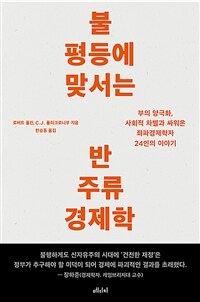단행본
(A) measure of fairness: the economics of eiving eages and minimum wages in the united states
- 청구기호
- 331.230973 MEA2008
- 판사항
- 2nd
- 발행사항
- Ithaca : ILR Press, 2008
- 형태사항
- 292 p
- 서지주기
- Includes bibliographical references (p.271-278) and index
- ISBN
- 9780801473630
소장정보
| 위치 | 등록번호 | 청구기호 / 출력 | 상태 | 반납예정일 |
|---|---|---|---|---|
이용 가능 (2) | ||||
| 한국노동연구원 | 00006458 | 대출가능 | - | |
| 한국노동연구원 | 00006438 | 대출가능 | - | |
이용 가능 (2)
- 등록번호
- 00006458
- 상태/반납예정일
- 대출가능
- -
- 위치/청구기호(출력)
- 한국노동연구원
- 등록번호
- 00006438
- 상태/반납예정일
- 대출가능
- -
- 위치/청구기호(출력)
- 한국노동연구원
책 소개
In early 2007, there were approximately 140 living wage ordinances in place throughout the United States. Communities around the country frequently debate new proposals of this sort. Additionally, as a result of ballot initiatives, twenty-nine states and the District of Columbia, representing nearly 70 percent of the total U.S. population, maintain minimum wage standards above those set by the federal minimum wage. In A Measure of Fairness, Robert Pollin, Mark Brenner, Jeannette Wicks-Lim, and Stephanie Luce assess how well living wage and minimum wage regulations in the United States serve the workers they are intended to help. Opponents of such measures assert that when faced with mandated increases in labor costs, businesses will either lay off workers, hire fewer low-wage employees in the future, replace low-credentialed workers with those having better qualifications or, finally, even relocate to avoid facing the increased costs being imposed on them. The authors give an overview of living wage and minimum wage implementation in Louisiana, New Mexico, Arizona, California, Massachusetts, and Connecticut to show how these policies play out in the paychecks of workers, in the halls of legislature, and in business ledgers. Based on a decade of research, this volume concludes that living wage laws and minimum wage increases have been effective policy interventions capable of bringing significant, if modest, benefits to the people they were intended to help.
목차
List of Tables and Figures p. ix
Preface p. xiii
Part 1 What Are the Questions? p. 1
1 Introduction p. 3
2 The Economic Logic and Moral Imperative of Living Wages p. 14
3 Debating Living Wage Laws: Paul Krugman versus Robert Pollin p. 34
Part 2 Impacts on Business p. 43
4 A $6.15 Minimum Wage for New Orleans: What It Would Have Meant for Businesses p. 49
5 The Santa Fe Citywide Living Wage Measure: The Impact on Business of the $8.50 Standard p. 70
6 Spending Injections from the Arizona Minimum Wage Increase: How Businesses Benefit p. 102
Part 3 Benefits to Workers and Families p. 107
7 What Is a Living Wage? Considerations for Santa Monica, California p. 111
8 How Santa Monica Workers Would Have Benefited from a $10.75 Living Wage p. 118
9 How Workers and Their Families Will Benefit from the Arizona Minimum Wage Increase p. 134
Part 4 Retrospective Analysis p. 143
10 Living Wage Laws in Practice: Retrospective Studies on Boston, Hartford, and New Haven p. 147
Part 5 Technical Studies and Debates p. 193
11 Mandated Wage Floors and the Wage Structure: New Estimates of the Ripple Effects of Minimum Wage Laws p. 199
12 Employment Effects of Higher Minimum Wages: A State-by-State Comparative Analysis p. 216
13 Comments on Aaron Yelowitz, "Santa Fe''s Living Wage Ordinance and the Labor Market" p. 223
14 Detecting the Effects of Living Wage Laws: A Comment on Neumark and Adams p. 233
Notes p. 253
References p. 271
Acknowledgments p. 279
Index p. 283









